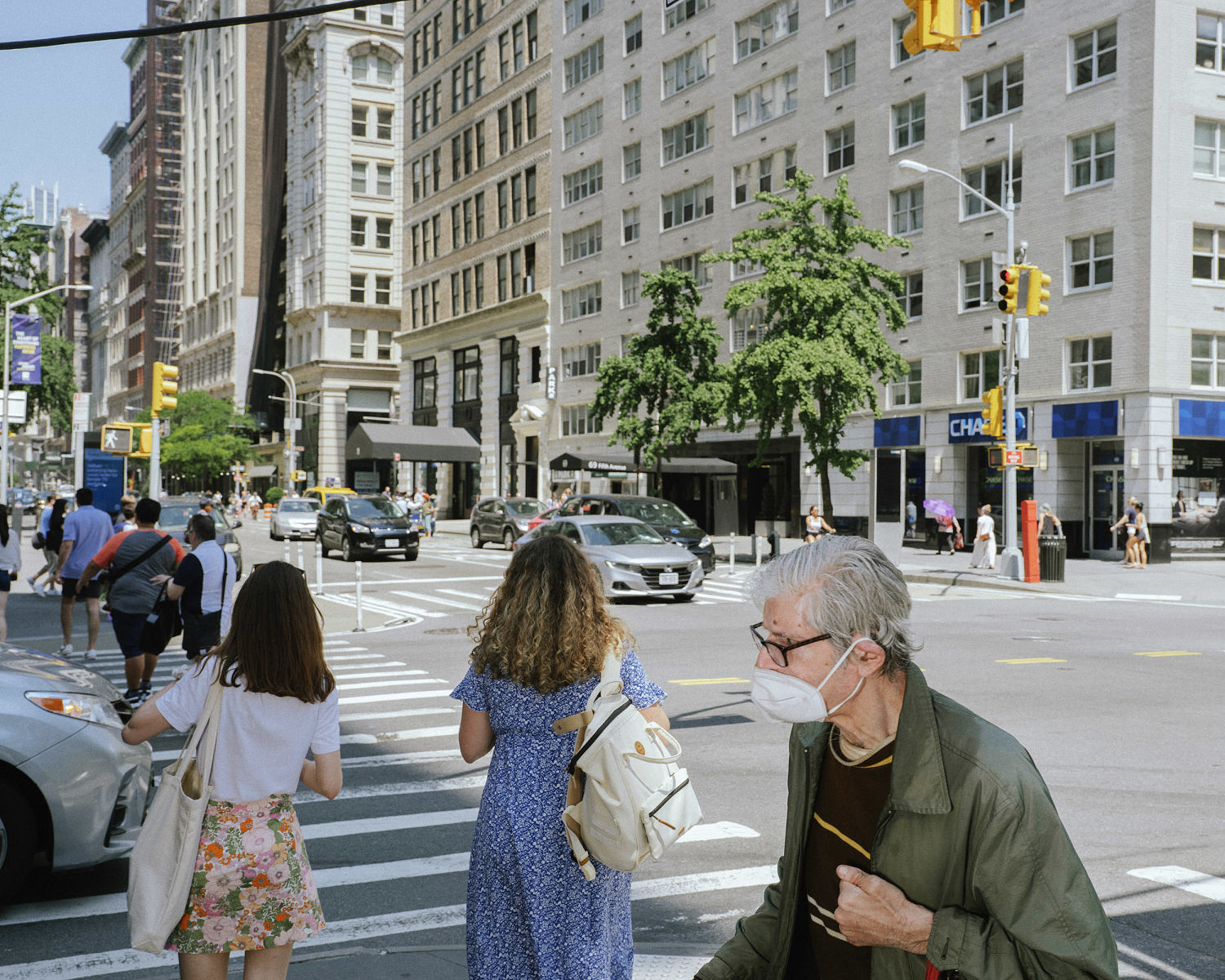COVID-19 infections are increasing across the United States, in large part due to the new, fast-growing FLiRT variants, including the dominant KP.3 strain. KP.
3 currently accounts for about 37% of new cases nationwide and is expected to keep rising, prompting concerns about a COVID-19 summer wave. What’s more, COVID-19 cases are either growing or likely growing in 45 states as of July 9, according to . KP.

3 is part of a family of highly contagious, mutated variants called the FLiRT variants — which include KP.3, KP.2 and KP.
1.1. Combined, they are driving more than two-thirds, or about 70%, of COVID-19 infections nationwide.
These new variants, which scientists dubbed after the locations of their spike protein mutations, have been circulating in the U.S. since the early spring.
Recent CDC data shows an increase in , emergency room visits and hospitalizations. Will there be another summer COVID-19 wave? What are the symptoms of the FLiRT variants? Are vaccines still effective? Here's what to know. The U.
S. is currently facing a rise in COVID-19 infections, which many experts consider to be the start of an anticipated summer wave, . While the CDC no longer tracks the total number of cases in the U.
S., there are clear indicators that COVID-19 is spiking across the country. The most recent CDC data available show test positivity is at 11%, up from 9.
1% from the previous week. During , test positivity was at about 12%, for comparison. published by the CDC show that the viral activity level for COVID-19 nationally is "high" — it was considered "high" or "very high" for most of January and February.
Levels are also "high" or "very high" in 26 states. There have been COVID-19 waves in . People travel more in the summer, and given , many are turning to indoor, air-conditioned gatherings, where the virus is more likely to spread.
The seasonality of COVID-19 is something scientists are still trying to understand. But one thing is obvious: “This virus is now integrating itself into our population and our way of life,” Dr. William Schaffner, professor of infectious diseases at Vanderbilt University Medical Center, tells TODAY.
com. The FLiRT variants and another new strain, — a spinoff of JN.1 — may also be contributing to the recent uptick in cases, along with waning immunity and poor uptake of the latest COVID-19 vaccine, experts say.
Due to their mutations, the FLiRT variants may be better at evading the immune system. In April, KP.2 quickly overtook that drove a surge in COVID cases this past winter.
In a matter of weeks, KP.3 surpassed KP.2 to become the most prevalent strain.
“We have to be cautious and we have to follow the data. ..
. We always have to be humble because SARS-CoV-2 has taught us a lot of new things," Dr. Albert Ko, infectious disease physician and professor of public health, epidemiology and medicine at Yale School of Public Health, previously told TODAY.
com. KP.3 is one of the FLiRT variants — along with KP.
2 and KP.1.1 — which are spinoffs of JN.
1.11.1, a direct descendant of JN.
1. They were initially detected in wastewater samples from across the country. "KP.
3 is a new omicron subvariant, which, along with its sister variant KP.2, has emerged in the past month and is now causing the majority of COVID-19 infections," says Ko. KP.
3 and the other FLiRT variants have additional mutations that set them apart from JN.1 and appear to give them an advantage over previous variants, Ko adds. The nickname "FLiRT" is based on the technical names for their mutations, according to the .
Just like other COVID-19 strains that have gained dominance in the U.S. over the last year — JN.
1, , , and — the FLiRT variants are part of the . The emergence of KP.3 and other FLiRT variants is the "same old story," Andrew Pekosz, Ph.
D., virologist at Johns Hopkins University, tells TODAY.com.
The SARS-CoV-2 virus mutates and gives rise to a new, highly contagious variant, which becomes the dominant strain. "The timeline that it happens in, three to six months, is much faster than we see with other viruses like influenza," says Pekosz. “It’s still early days, but the initial impression is that this variant is rather transmissible,” Schaffner told TODAY.
com in May. The proportion of cases caused by the FLiRT variants is increasing, while the proportion caused by other variants (except for LB.1) is decreasing, which suggests the FLiRT variants have features that give it an advantage, the experts note.
“The (FLiRT) mutations appear to make the KP.3 variant more transmissible than JN.1,” says Ko.
“But I think the good news is that there’s no evidence showing that it’s more virulent or that it’s causing more hospitalizations or deaths.” Over 97% of people in the U.S.
have natural or vaccine-induced antibodies against the the SARS-CoV-2 virus, per the CDC, but this immune protection fades over time. Low vaccination rates and waning immunity create a vulnerable population, which may allow the FLiRT variants to take hold. Only time and more data will tell, the experts note.
Laboratory studies suggest that the FLiRT variants are mutated enough such that current vaccines and immunity from prior infection will only provide partial protection, says Schaffner. "We'll have to see how true that is, but it appears, over time to be becoming a more prominent variant," he adds. “It’s still really early .
.. but I don’t think we need to sound the alarm bells as of yet,” says Ko.
It is still too early to tell whether the symptoms of KP.3, KP.2 and other FLiRT variants are different from previous strains.
“The FLiRT variants are probably not going to create very distinctive symptoms. It looks at the moment to follow the other subvariants,” Schaffner said. The symptoms of the FLiRT variants are similar to those caused by JN.
1, which include: According to the CDC, the type and severity of symptoms a person experiences usually depend more on a person’s underlying health and immunity rather than the variant that caused the infection. Similar to JN.1 and other omicron subvariants, the FLiRT variants seem to be causing milder infections, says Schaffer.
Early laboratory studies indicate that the vaccines will continue to provide protection the FLiRT variants — "a little less protection, but not zero by any means," says Schaffner. As the virus mutates, it is becoming progressively different from the omicron strain targeted in the released in the fall of 2023. "We would expect that to happen, and we anticipate the plan is to have an updated vaccine in the fall available to everyone," says Schaffner.
Advisers to the met in early June to decide which strains to include in the updated COVID-19 vaccines for 2024–2025. The committee initially voted to recommend a monovalent vaccine targeting the JN.1 variant for this fall.
However, based on new data, the FDA now advises drugmakers to update vaccines to target the KP.2 strain, the agency said. "It's with the assumption that future variants or future mutants will emerge from the (dominant) omicron subvariants we've experienced most recently," says Ko.
"But again, there's always a lot of uncertainty about where the next mutant is going to come from ...
will it come from KP.3, KP.2 or from something upstream like JN.
1?" Ko adds. Even if vaccines do not prevent infection, they can still offer some protection by preventing severe disease, hospitalization, and COVID-19 complications, . “It’s still clear that the more severe cases that come into the emergency room predominate in people who either are not up to date on their vaccines or haven’t gotten a vaccine in a really long period of time,” says Pekosz.
Vaccination is especially important for the elderly, says Pekosz, which is why the CDC recently recommended adults ages 65 and older get an additional dose of the . Unfortunately, vaccination uptake is still poor, the experts note. "The vaccines are still showing signatures of effectiveness, but they're not being utilized anywhere close to the level that they should be," says Pekosz.
As of May 2024, only about 22% of adults and 14% of children have reported receiving the updated COVID-19 vaccine released in September 2023, . All current PCR and at-home tests are recognizing KP.3 and other FLiRT variants, the experts note.
(Although if you have , it's a good idea to stay home to avoid potentially exposing other people, TODAY.com previously reported.) If you are using an at-home antigen test, always remember to check the expiration date and whether it’s been extended by .
“Antivirals (such as ) are also working well. ..
. There’s not any major signals of antiviral resistance in the population, which is a positive sign,” says Pekosz. With COVID-19 cases on the rise again, consider taking steps to protect yourself and others against infection.
The CDC recommends the following prevention strategies: Caroline Kee is a health reporter at TODAY based in New York City..


















